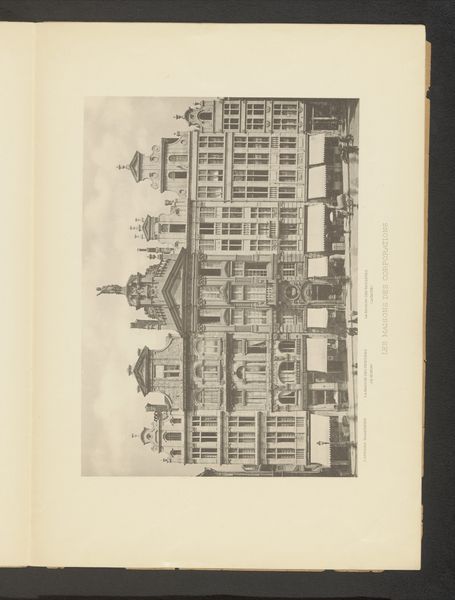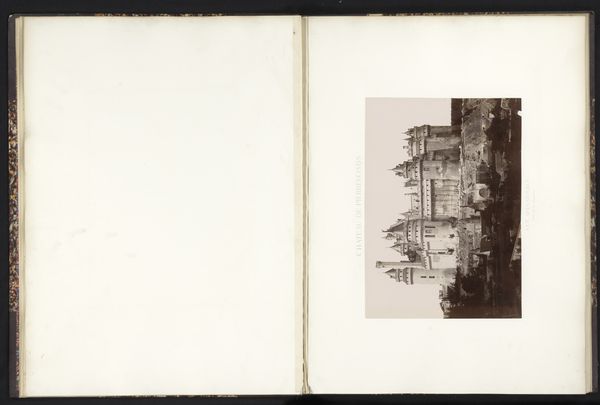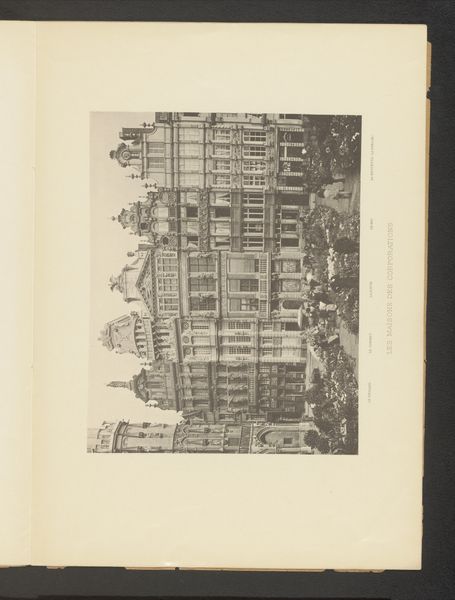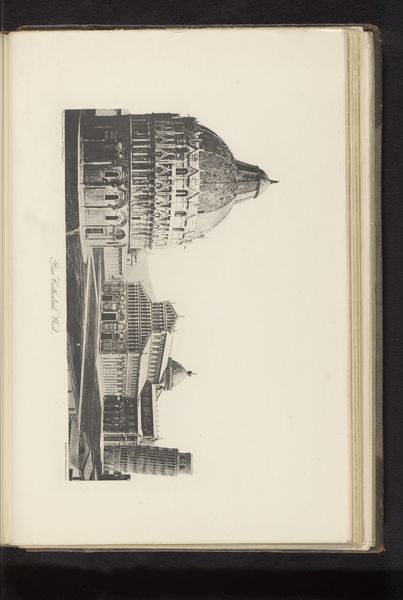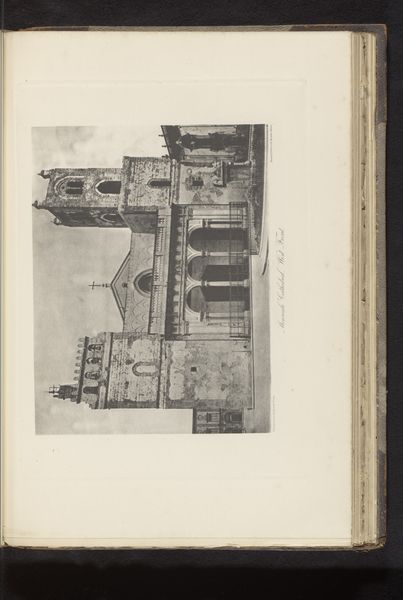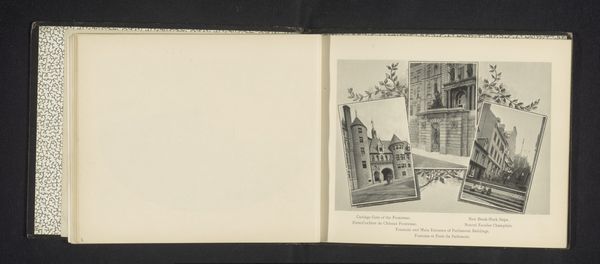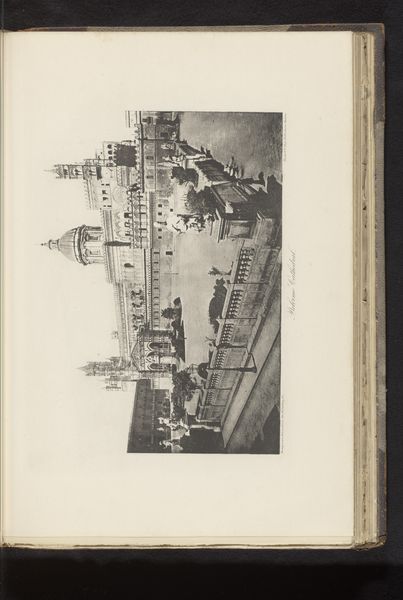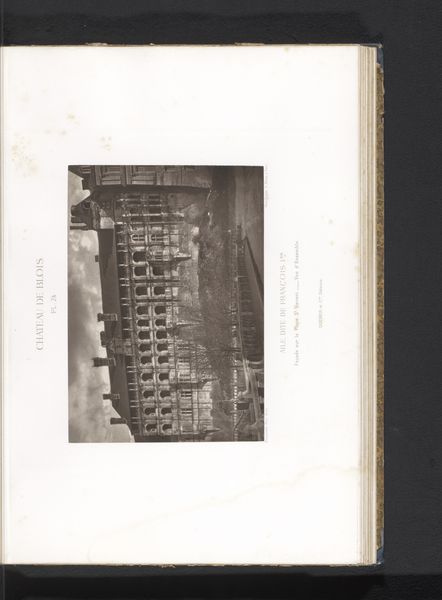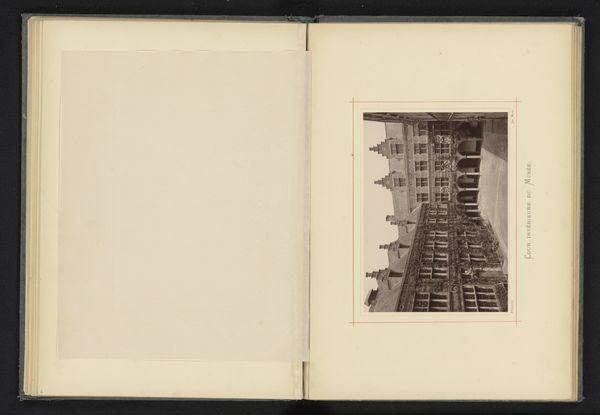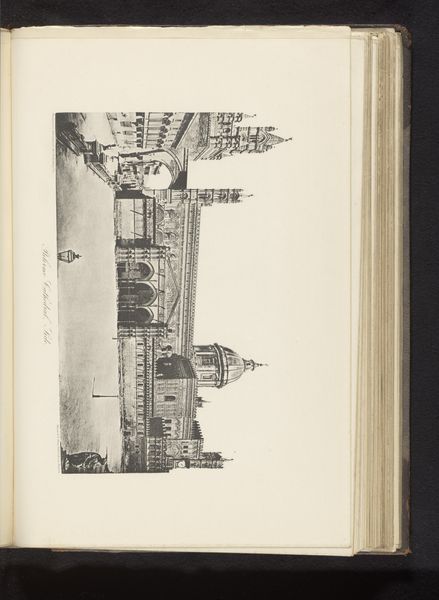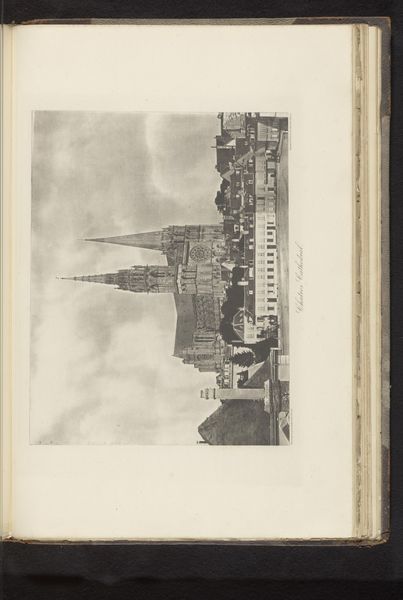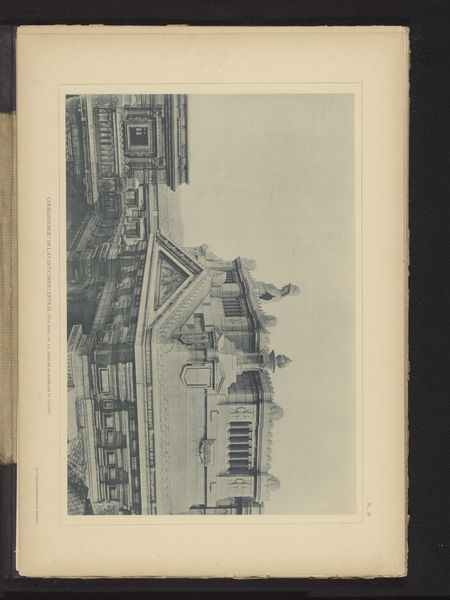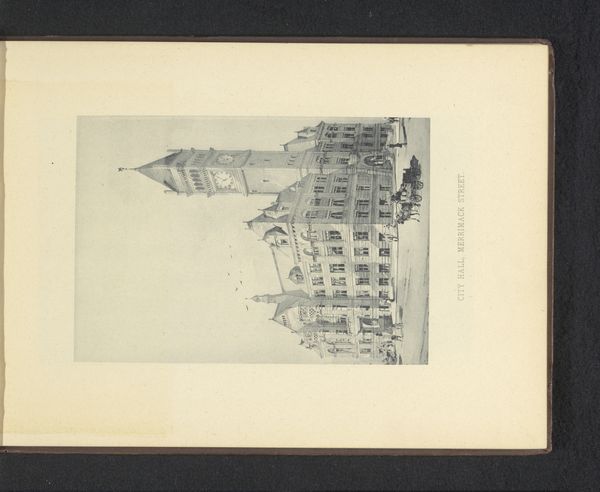
Gezicht op een toneelstuk opgevoerd op de markt van Oud-Antwerpen op de Wereldtentoonstelling van 1894 in Antwerpen Possibly 1894 - 1895
0:00
0:00
print, engraving
# print
#
cityscape
#
genre-painting
#
history-painting
#
engraving
#
realism
Dimensions: height 215 mm, width 256 mm
Copyright: Rijks Museum: Open Domain
Curator: What immediately strikes me is the overwhelming density. A throng of people clustered together, observing something... it feels like controlled chaos. Editor: Indeed! We're looking at an engraving titled "Gezicht op een toneelstuk opgevoerd op de markt van Oud-Antwerpen op de Wereldtentoonstelling van 1894 in Antwerpen," offering us a glimpse into a theatrical performance at the Antwerp World's Fair. The artwork is by an anonymous artist. Curator: Ah, the World's Fair! Of course. I'm curious about this reconstruction of "Oud-Antwerpen," or Old Antwerp. Was it meant to be a purely celebratory thing, or something a little more… fraught? Editor: A fascinating question. These reconstructions often presented a romanticized version of the past, downplaying social complexities. In this case, it was an immersive entertainment spectacle that positioned audiences to literally walk through a nostalgic idea of a medieval world, which conveniently bolstered national pride at a time of immense colonial activity. Curator: That colonial context is everything, isn't it? Looking closer, there is this almost… theatrical quality to the crowd itself. Each face seems deliberately rendered, almost posed. They are like an audience within an audience. Do you know if photography played a role at that time? Editor: Absolutely. Photography’s own development was showcased at these exhibitions, so its representational tools, such as dramatic staging and sharp contrast, definitely influenced artists, and here’s an example. It made spectacles such as a medieval town possible and realistic to those who saw them or participated as part of a national project. Curator: It feels important to remember the politics behind these images—these carefully constructed visions of history. It challenges me, anyway, to wonder about how to make meaningful and nuanced work today, even when addressing similar themes. How much must change so our collective unconscious shifts forward! Editor: Agreed. Analyzing these images invites us to reflect on the role of art in constructing collective identities and the power dynamics at play in historical representation. Thanks to the sharp detail of this medium we understand both social practice and how its staged and then documented for future generations.
Comments
No comments
Be the first to comment and join the conversation on the ultimate creative platform.
